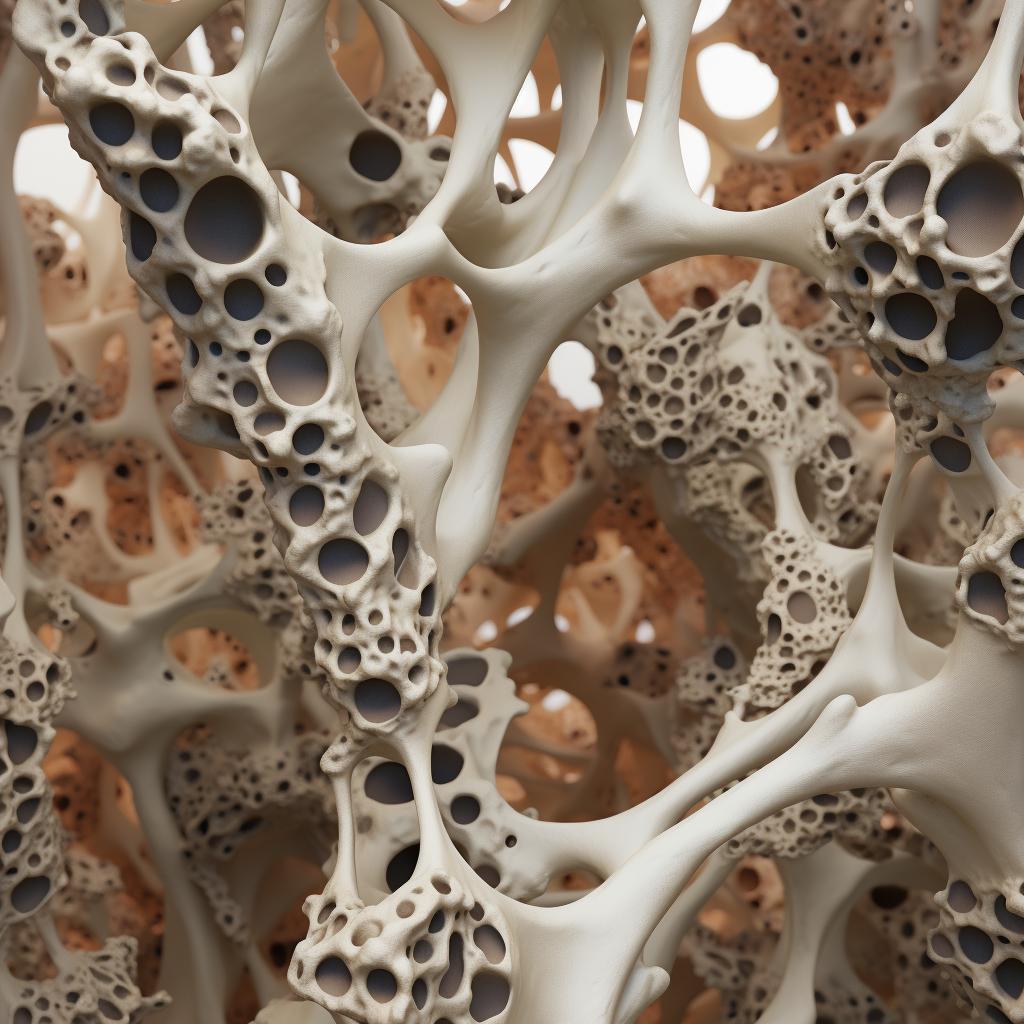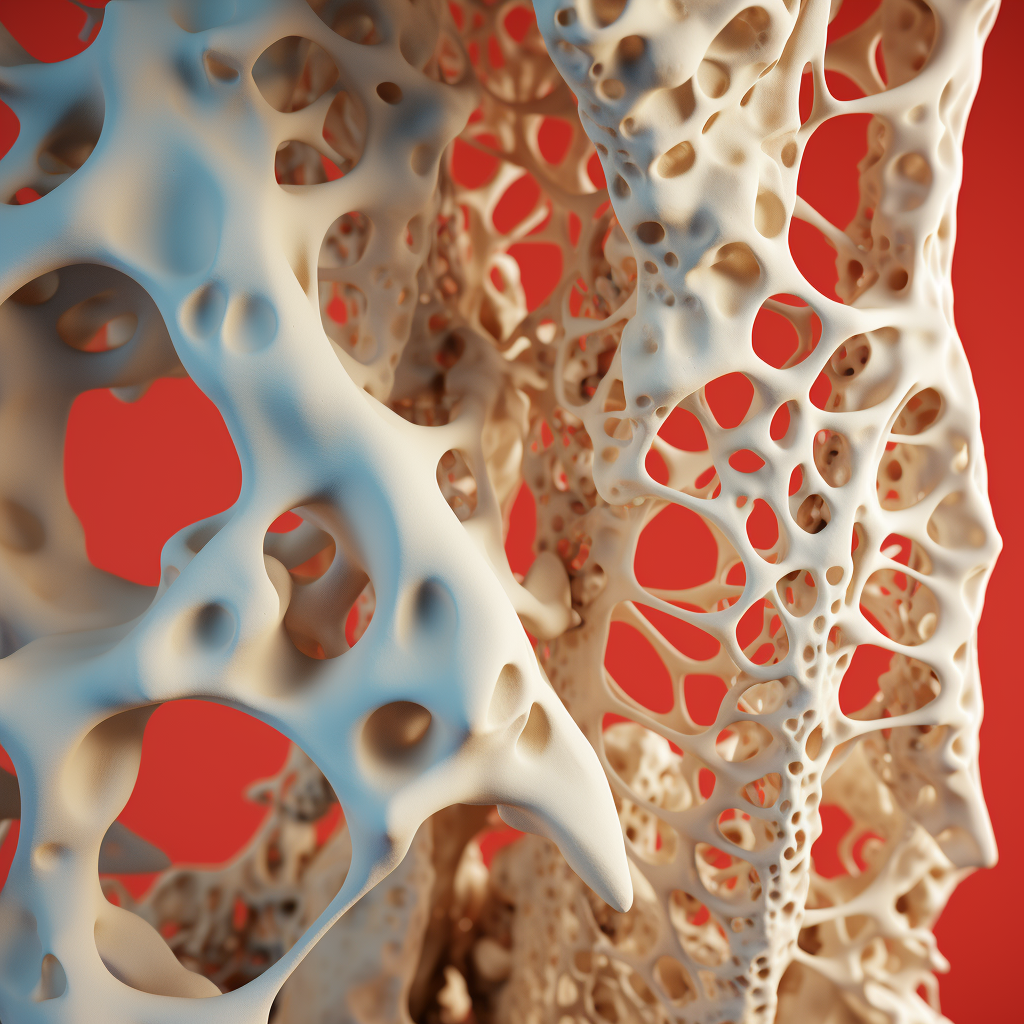What are Treatments for Osteoporosis? A Comprehensive Guide

Osteoporosis is a prevalent concern that affects millions globally. Understanding what causes it, its diagnosis, and, most importantly, its treatments is essential. But first, let’s delve into osteoporosis and why it’s a significant health concern.
What Is the Main Cause of Osteoporosis?
Osteoporosis is a bone condition where bone density decreases, making fragile bones more susceptible to fractures. The main cause of osteoporosis is an imbalance in the bone remodeling process – where old bone tissue is broken down and replaced by new.
Throughout life, bone is constantly being renewed in a delicate balance of bone loss (resorption) and bone formation. In our early years, the body produces bone faster than it breaks down, leading to increased strength and density. However, as we age, particularly after age 30, this balance shifts. Bone resorption surpasses bone formation, resulting in a gradual loss of bone density.
Factors that exacerbate this imbalance include reduced levels of estrogen in women after menopause, low calcium intake, prolonged use of certain medications, and lifestyle factors like smoking and excessive alcohol consumption. While age-related changes are the primary cause, genetics, hormonal imbalances, and certain underlying medical conditions can also contribute to the development of osteoporosis.
Facts and Statistics:
Osteoporosis, often called the “silent disease,” doesn’t present visible symptoms initially. The name is derived from the Greek words “osteo,” meaning bone, and “porosis,” meaning porous. This combination aptly describes the condition where bones become less dense and more fragile.
Signs and Symptoms
In its early stages, osteoporosis often remains unnoticed. However, as it progresses:
- Individuals may experience back pain from fractured vertebrae.
- A gradual loss in height.
- A stooped posture can develop.
- Bones become easily prone to fractures.
Facts and Statistics:
Many people with osteoporosis often realize they have the condition only after experiencing a fracture. Curiously, even something as seemingly harmless as a sneeze or a minor bump can lead to fractures when someone has severe osteoporosis.

Diagnosis
So, how is osteoporosis diagnosed? A bone density test, primarily through dual-energy X-ray absorptiometry (DEXA), is the most common method. This test gauges bone mineral density, determining osteoporosis stages and the risk of bone fractures.
Facts and Statistics:
DEXA scans, used to diagnose osteoporosis, not only measure bone density but can also estimate one’s risk of fractures. The technology behind these scans is so precise that the radiation exposure is less than one-tenth of a standard chest X-ray.
Prevention and Diet
Osteoporosis prevention goes beyond just regular screenings and medical interventions; it deeply intertwines with one’s daily diet and lifestyle choices. Many wonder what are the seven worst foods for osteoporosis. While the complete list might vary depending on sources, universally recognized culprits include sodas (due to their high phosphoric acid content), foods and drinks with excessive caffeine, and items overloaded with sodium. These affect bone density directly and interfere with the absorption of essential bone-building minerals like calcium.
On the flip side, incorporating calcium-rich foods, vitamin D, and magnesium can help counteract these negative effects. Moreover, when dietary precautions are combined with regular weight-bearing exercises and a conscious effort to shun habits like smoking or excessive alcohol consumption, the fortification of bone health becomes more achievable. This holistic approach underscores the significance of diet in osteoporosis prevention and the broader spectrum of maintaining optimal health.
Facts and Statistics:
While calcium and vitamin D are popularly known for promoting bone health, magnesium, vitamin K, and certain proteins are also essential for maintaining bone density. Surprisingly, even habits like good posture can play a role in preventing spinal fractures related to osteoporosis.
What Are Treatments for Osteoporosis?
Managing osteoporosis is a multifaceted approach, combining pharmaceutical treatments, lifestyle adjustments, and dietary modifications. Several medications have been developed to slow, stop, or even reverse the loss of bone density. Here are some of the primary treatment methods:
Bisphosphonates
This class of drugs is often the first line of defense against osteoporosis, especially in postmenopausal women. Bisphosphonates slow the bone loss process and in some cases, can increase bone density. Commonly prescribed options include:
- Fosamax (Alendronate): Taken orally, it reduces the risk of hip, wrist, and spine fractures.
- Actonel (Risedronate): Also taken orally, it slows bone loss and reduces the risk of spinal fractures.
- Boniva (Ibandronate): Available in oral and intravenous forms, it reduces the risk of spinal fractures.
- Reclast (Zoledronic acid): An intravenous treatment given once a year can reduce the risk of fractures in various body parts.
Facts and Statistics:
Bisphosphonates were initially used to prevent the scaling of pipes and machinery! They were later discovered to have bone-preserving properties, marking a groundbreaking shift in osteoporosis management.
Denosumab (Prolia)
Unlike bisphosphonates that affect the bone remodeling cycle by targeting osteoclasts (bone-removing cells), Denosumab acts by inhibiting a key protein essential for the formation and function of osteoclasts. As a subcutaneous injection twice a year, it’s particularly effective for postmenopausal women at high risk of fractures.
Facts and Statistics:
Unlike many osteoporosis treatments derived from hormonal pathways or bone structures, Denosumab is a monoclonal antibody, a type of protein designed to target and block specific cells or proteins.
Hormone-Related Therapy
Hormonal decline, especially of estrogen in women after menopause, is a key factor in accelerating bone loss. Hormone-related treatments can help in the following ways:
- Estrogen Replacement Therapy (ERT): Replacing estrogen can help maintain bone density, but due to associated risks, like breast cancer or blood clots, its use is selective and typically short-term.
- Selective Estrogen Receptor Modulators (SERMs): Drugs like Raloxifene mimic estrogen’s beneficial effects on bone density without some of the risks associated with ERT.
Facts and Statistics:
In earlier decades, hormone replacement therapy was frequently prescribed for post-menopausal symptoms. It was only later that its beneficial effects on bone health became evident, although its use has become more conservative due to potential side effects.
Bone-building Medications
These are newer drugs that can spur bone growth:
- Teriparatide (Forteo): An injectable form of parathyroid hormone, it increases the rate of bone formation. Treatment is limited to 2 years, and it’s particularly useful for postmenopausal women and men at high risk of fractures.
- Abaloparatide (Tymlos): A form of parathyroid hormone, it can stimulate bone formation and decrease the risk of fractures in postmenopausal women with osteoporosis.
- Romosozumab (Evenity): A newer treatment, it increases bone formation and decreases bone loss. It’s given as a monthly injection for a year.
Facts and Statistics:
Some bone-building medications, such as Teriparatide, are derived from natural hormones like the parathyroid hormone, making them effective stimulators for new bone growth.
Exercises
Maintaining an active lifestyle is essential. Weight-bearing and resistance exercises can significantly improve bone health:
- Weight-bearing exercises include walking, jogging, and climbing stairs where bones and muscles work against gravity.
- Resistance exercises: Activities like weight lifting improve muscle mass and strengthen bones.
Working with a physiotherapist can provide a personalized regimen, ensuring exercises are done safely and effectively.
Facts and Statistics:
Astronauts in space are prone to bone density loss due to the microgravity environment. To combat this, they perform rigorous weight-bearing exercises, highlighting the importance of physical activity for bone health.
Conclusion
Osteoporosis, while common, can be managed and, in some cases, prevented. Knowing its causes, the importance of diagnosis, and available treatments for osteoporosis can make a difference. Moreover, understanding the dietary impacts, including being wary of the seven worst foods for osteoporosis, plays a crucial role in bone health. Stay informed and proactive in taking care of your bones.
References
- National Institutes of Health Osteoporosis and Related Bone Diseases National Resource Center: https://www.bones.nih.gov/health-info/bone/osteoporosis/overview
- Mayo Clinic. Osteoporosis: https://www.mayoclinic.org/diseases-conditions/osteoporosis/symptoms-causes/syc-20351968
- International Osteoporosis Foundation. Diagnosis: https://www.iofbonehealth.org/diagnosing-osteoporosis
- National Osteoporosis Foundation. Prevention: https://www.nof.org/patients/prevention/
- National Osteoporosis Foundation. Medications: https://www.nof.org/patients/treatment/medications/
- Mayo Clinic. Osteoporosis drugs: https://www.mayoclinic.org/diseases-conditions/osteoporosis/in-depth/osteoporosis-treatment/art-20046869
- U.S. Food and Drug Administration. Bisphosphonates: https://www.fda.gov/drugs/postmarket-drug-safety-information-patients-and-providers/bisphosphonates-information
- Amgen. Prolia (Denosumab): https://www.prolia.com/
- Mayo Clinic. Hormone Therapy: Is it right for you?: https://www.mayoclinic.org/diseases-conditions/menopause/in-depth/hormone-therapy/art-20046372
- U.S. National Library of Medicine, MedlinePlus. Teriparatide Injection: https://medlineplus.gov/druginfo/meds/a605023.html
- NASA’s Human Research Program. Bone Density in Space: https://www.nasa.gov/mission_pages/station/research/experiments/explorer/Investigation.html?#id=680





